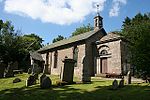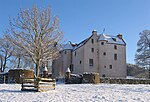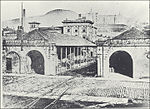Lundie Kirk

Lundie Kirk was the parish church of Lundie, Angus, in Scotland from the 12th century until 2017. The church was constructed in Romanesque style in the 12th century and was owned by the Priory of St Andrews for whom it may have served as a rest stop for travelling monks. The church came into the ownership of the Duncan family in 1660. A mausoleum at the east end of the structure was added in 1789 to house the body of Sir William Duncan, 1st Baronet and Admiral Adam Duncan, 1st Viscount Duncan was buried in the graveyard. The church was partly rebuilt in 1846 and a significant renovation was carried out in 1892, converting the mausoleum to a vestry and adding a porch. The church is a Category A listed building. The Church of Scotland ceased holding regular worship in June 2017 and, after an unsuccessful search for a community use, the church was sold in 2019. The church was sold again by auction in November 2021, achieving a price of £40,000. The new owner intended to convert the structure into a family home. The structure suffered a serious fire on 18 November 2022, leaving it a roofless shell.
Excerpt from the Wikipedia article Lundie Kirk (License: CC BY-SA 3.0, Authors, Images).Lundie Kirk
Geographical coordinates (GPS) Address Nearby Places Show on map
Geographical coordinates (GPS)
| Latitude | Longitude |
|---|---|
| N 56.516138888889 ° | E -3.1544444444444 ° |
Address
DD2 5NT
Scotland, United Kingdom
Open on Google Maps









